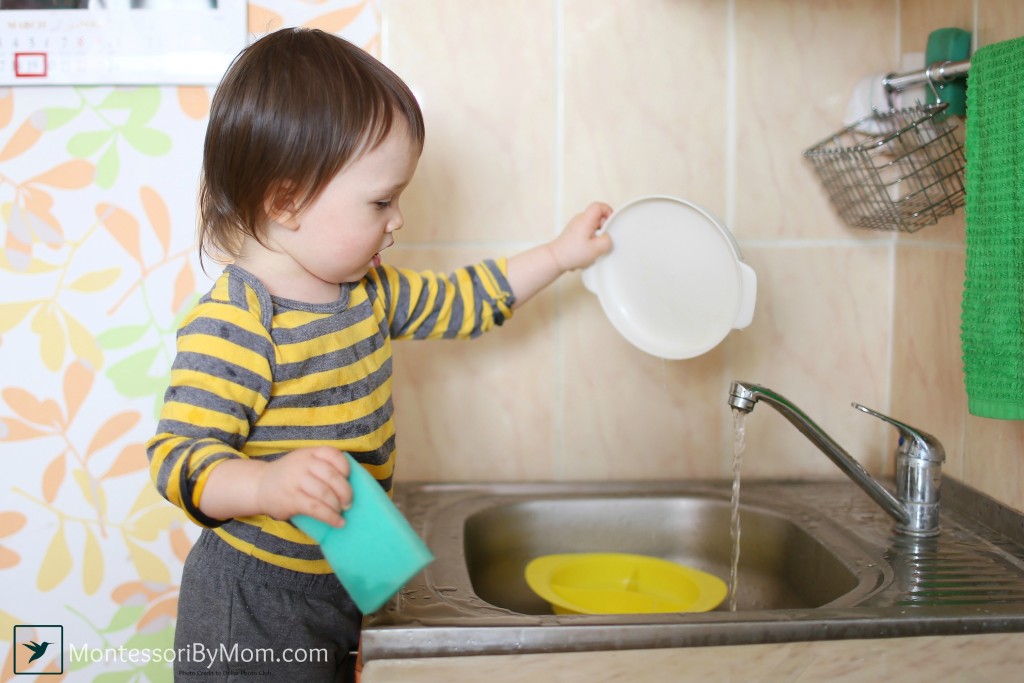At Montessori By Mom, we have a true passion to make Montessori materials accessible to all. We strive to bring quality lessons and ease parent stress by developing Montessori activities for preschoolers. But what about using Montessori at home positive discipline? That is much harder to package in a box and deliver to a parent’s door.
Montessori at Home Positive Discipline Strategies
Don’t we all wish there was a parenting manual that was delivered with your baby? Instructions on how to help them grow and develop in a positive home environment. Maybe an extra chapter on your child’s personality and aversions to sensory materials, foods, or sounds.
It just isn’t reality. But Dr. Montessori spent her life studying children and wrote her findings in many amazing Montessori books. She created an approach that empowers parents to discipline with love and guide their children to learning for themselves.
Learning Through Experiences
One of the core principles of the Montessori approach is that children learn through experience. Instead of instruction, they develop skills and the ability to reason through activities and direct experience.
Dr. Montessori observed that children are sponges, where each new experience is absorbed and helps them make sense of the world.

One amazing way to observe this in your own child is through practical life work. With this type of work, children are engrossed in perfection. They marvel at their own abilities to pour, wash, and arrange items in their everyday world. Through these experiences, they develop confidence in themselves.
How can a parent support this independence? Allow your child to help with the cleaning and cooking. Give them the responsibility to make their own bed, feed the dog, or wash the windows. And, although difficult, allow them as they struggle through little tasks like buttoning their shirt and tying their shoes. These tasks develop the child’s character.
Learning About Life
Let us share with you a scenario many parents are familiar with: the child wants the toy the parent or caregiver has said they may not have. The child experiences this new tension of their own desires and circumstances they can’t control. Barely aware of their own feelings, they instinctively express anger and/or sadness. When that anger and sadness comes out, it is labeled as “bad behavior” or “acting out.”
What happens next is pivotal. It is not just about the thing the child wants but can’t have. Because the child is that learning sponge, they are actually developing their whole approach to life. Just like learning that a cube cannot fit into a circular hole, they must learn the cause and effect of their reactions. If the parent says that a certain behavior is not acceptable, the answer must remain “no.” The parent can express with different words, and when appropriate, explain the reasons why. However, the point is this: the more the child understands the parents’ words are true, the more they learn about life.
As a parent, standing behind decisions takes practice and perseverance. Talk with a spouse or caregiver to be sure the standard the parents set for the child is upheld throughout their daily life. The more consistency there is in parenting and discipline, the better it is for the child. They will not have a question later in life on what is true. They will accept the “no” answer the first time and skip the whining.
Short-Sighted Parenting
Let’s take the same scenario from above with a different reaction from the parent. A parent may want to just make the “bad behavior” stop. Many parents are taught that the goal of parenting is to prevent “bad behavior” or make it go away.
Imagine the child wants to play with the same toy from our above example but is told not to. The child starts to cry. To stop the “bad behavior,” the parents give them the toy. This may stop the crying, but through this experience, the child develops a model of how life works: “If I can’t get what I want, whining will get it or something better.”
Parents may use these “bad behavior” opportunities to help the child learn a healthy way to communicate needs and wants. The parent is the child’s first teacher and parents can take the opportunity to help children learn through consistency.
If the parent skips the opportunity to teach, the tactics which are taken to stop “bad behavior” in early childhood take a similar and more sophisticated form as the child grows up. The parent finds themselves bartering to get chores done. They may issue threats or rewards as motivation, but then end up doing it themself when the child doesn’t.
One helpful parenting technique is the phrase “Asked and Answered.” This Montessori at home positive discipline technique eliminates the whining or arguments that children may use to get what they want.
A Simple Question
Parents can approach Montessori at home positive discipline way with a simple question: What does this teach my child about life?
If I pick up their mess? Count to 3 with the promise of a threat? Ignore real behavior problems? Put them in a time-out?
How does all this form their view of life and how does it teach them to interact with the world around them?
A Montessori teacher’s role (among other things) is to prepare the classroom environment to prepare them to learn. In the same way, a parent who asks this question when dealing with their child’s behavior prepares them for life.
We hope you use these Montessori at home positive discipline concepts and work them into your parenting journey. If you need extra support our Montessori By Mom community would be happy to help!





If you are dealing with a baby I would save the word no and use the art of distraction .
This is not Montessori as I understand it. Of course, consistency is important, but I miss some other important parts when dealing with frustration. First, the parent should accommodate the child’s feeling, take it serious. Because it is not some acting out, but real experienced grief. Second, the parent should help express the child their feelings: “I see you are angry because…”, since the child does not necessarily know to name what happens to them, and third, instead of simply repeating “No”, the parent should explain the reasons behind their decision to make the child understand and if possible seek (together with the child or not) for solutions how to respond to the needs expressed by the child in a different way. This works wonders, even in rather small children.
Hi Anna,
Thank you for your comment! The article encourages an appreciation and consideration for the child’s emotions and feelings. In fact, it recommended that difficult moments be used as “opportunities to help the child learn a healthy way to communicate needs and wants.” The point was not a recommendation for specific language (like just saying “No”), but exactly what you suggested, to seek “solutions how to respond to the needs expressed by the child in a different way.” The use of the word “No” is a very debated point, which was not intended to be the focus of this article. It has been edited to reflect that. Thank you again for your comment!
I am clueless in demanding my kids to do their chores. I have been using a job board with household jobs they can pick. But it doesnt work. And i knpw Montessori doesnt support rewards or threat, so how would you motivate kinds tondo chores because my kids just wanna play and play
Do the chores with them and show them that they need to respect there environment and just get the job done.
Say – “come on will only take a minute or two. would you like some company?” Or “would you like same help?”
Say it with love! They may lose it the first couple of times but don’t give up. X
Just be very calm and happy.